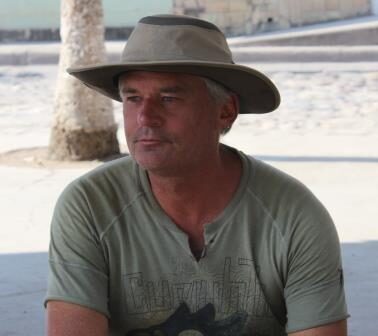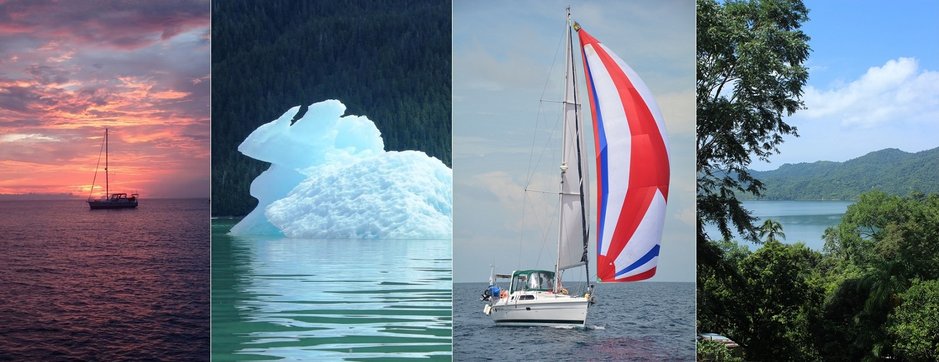Today was all about going to see the Copan Ruins. This is what we came for, and we were not disappointed. This was our guide Felix. He has been giving tours here for 30 years. He was a pretty funny guy, his English was excellent, and we learned a lot from him - though some of the information contradicts what we've been told on tours of other ruins. Whether this is because different Mayan subcultures were actually different, or whether some of the information we were told was out of date we don't know.
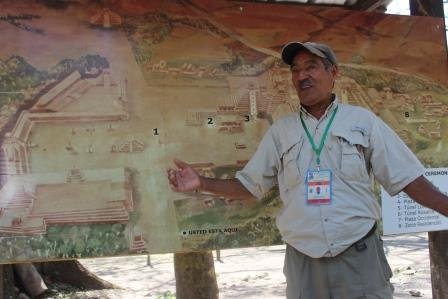
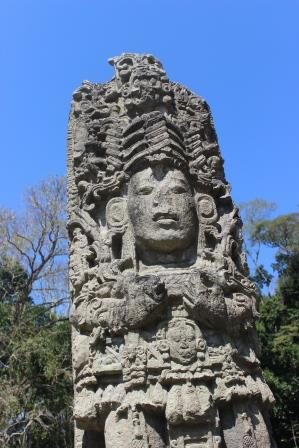
The guide spent a lot of time interpreting all the hieroglyphs on the stellas that were located all over the site. Most of what is outside on the grounds are reproductions with the originals being in the museum protected from the elements. Note the red tinges on the one on the right. The red is from a paint that was applied when they were built. Apparently they were typically painted in bright colors. Though the streets and walls of the city itself were covered in white plaster. So one can imagine that the stellas really stood out in those days against the white background.
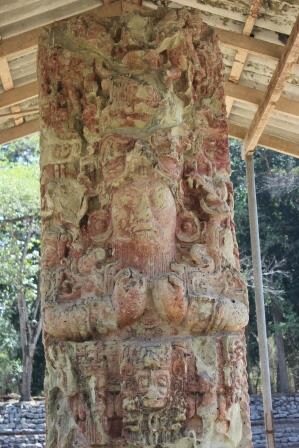
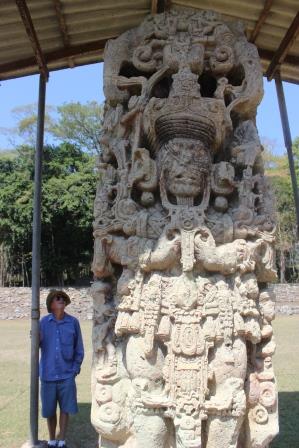
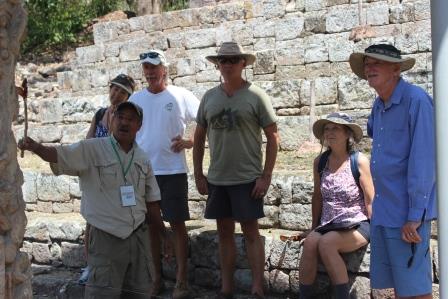
Here at Copan things were apparently fairly bloody. They sacrificed a lot of humans to the gods. This stone was used to chop off heads and the groves cut in the stone were to drain the blood. Bleck.
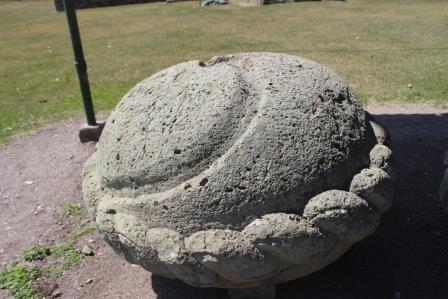
Then we wandered around the main site which is pretty big.
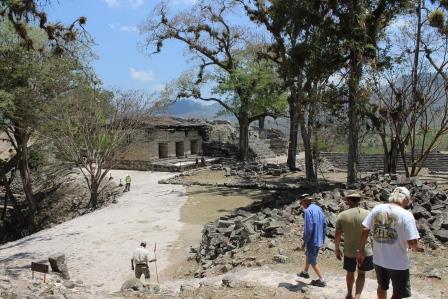
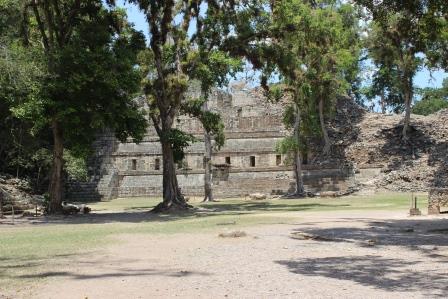
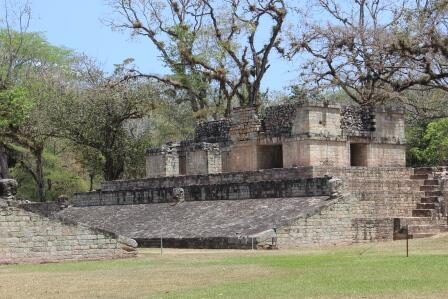
This was the view that the king had from his chair overlooking the main square.

They had a sophisticated water drainage system to deal with the rainy season. They had carved troughs and laid them underground to drain the water from the central square down to the river.
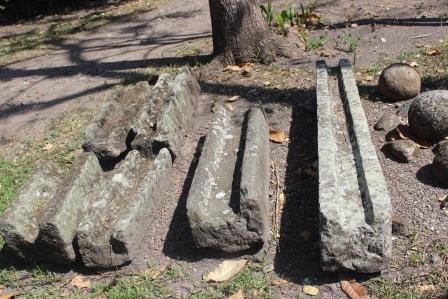
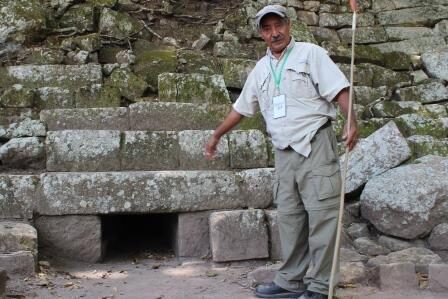
And they had steam baths where they would run water and put hot rocks in to generate the steam.
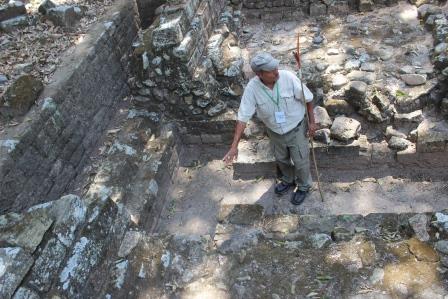
The site was built in layers. There were 16 dynasties over more than 1500 years. Each generation would build on top of the temples of the previous generation - which is how so many of the pyramids got to be so high. In the picture below you can see the layers as each generation built upon the previous.
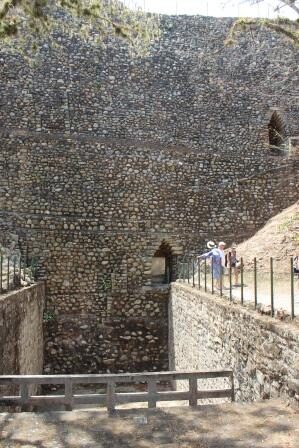
Archeologists have built tunnels underneath many of the structures to excavate what the previous structures looked like. And part of the tour was to be able to go underground to see the hieroglyphs unearthed beneath the surface.
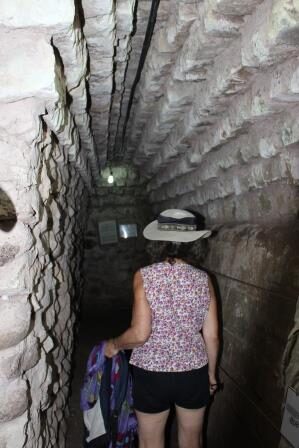
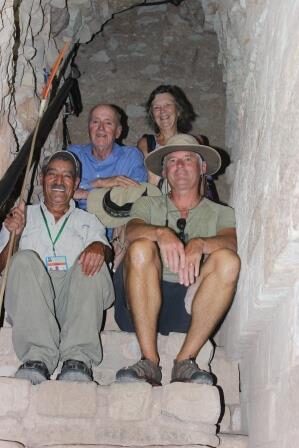
Then it was onto the museum. Most of the museums we've seen on the ruins sites are not very impressive. But this one was different. They've actually persevered many of the stellas and hieroglyphs by placing them into stone walls the way they would originally have been seen - resulting in an impressive museum. You enter the museum through a long dark tunnel going down underground, and you come to the end to find a full size reproduction of one of the temples located in the middle of the museum - open to the sky above.
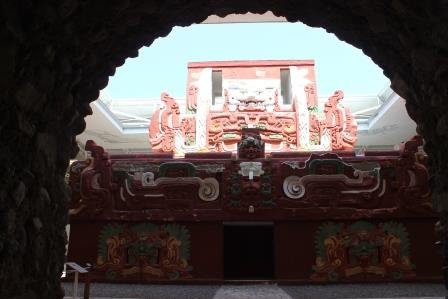
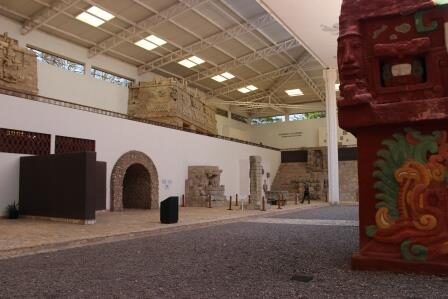
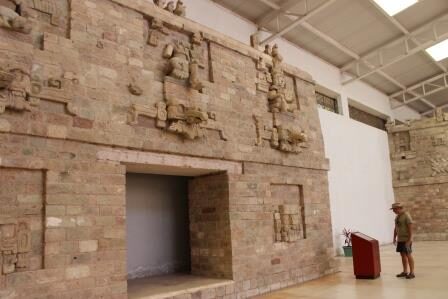
Here there were workers building a new exhibit with materials from a newly excavated site. Melissa asked first if she could take pictures because we had heard that Mayans often still believe that if you take their picture you steal their soul. Most of the workers didn't object and were happy to take a break and pose for a photo. But there was one worker who quickly backed away and shook his head. Though for all we know he was a fugitive or something.
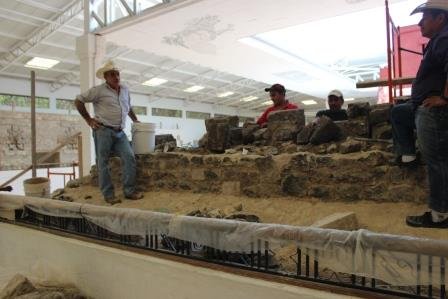
This hieroglyph Dave speculated might show something akin to a sextant for measuring angles.
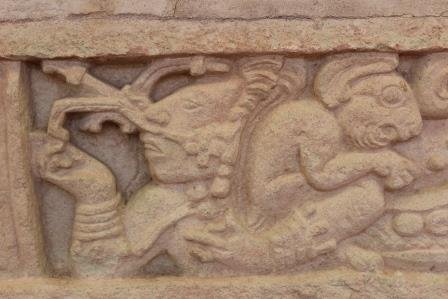
And this is a giant vampire bat - because they really do have vampire bats here. Apparently the Mayans used to torture their enemies by putting them in with vampire bats at night.
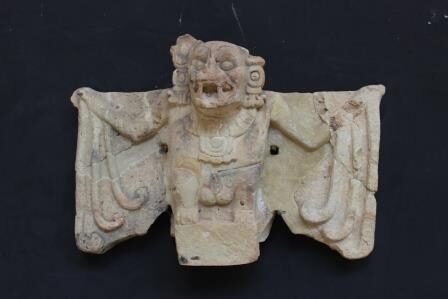
This was the view from the site overlooking the surrounding hillsides. In the lower right you can see greenhouses that are used to grow tomatoes.

The land back when the civilization reined and now is mostly agriculture. They grow squash, potatoes, corn, coffee, and cocoa.
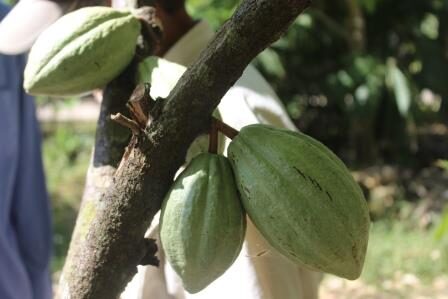
The bird watching here was amazing. The Macaw parrot lives wild here. The Macaw was important to the Mayans who used their feathers for headdresses and other ceremonial clothing.
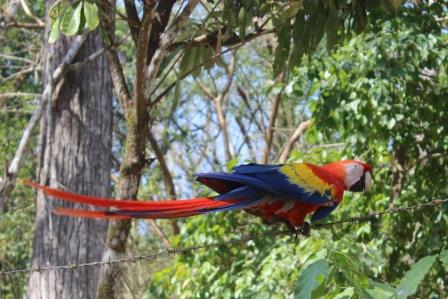
There were also odd yellow tail birds that lived in these nests. How they build the nests to hang this way must be pretty amazing to watch. (NOTE: We later learned these birds are called Orpendula - thanks Gid!)
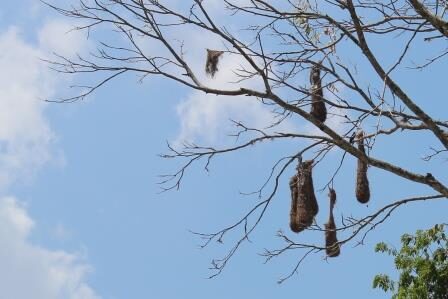
This tree grows with its roots in a N/S/E/W position. How the tree knows which way is North was also a mystery.
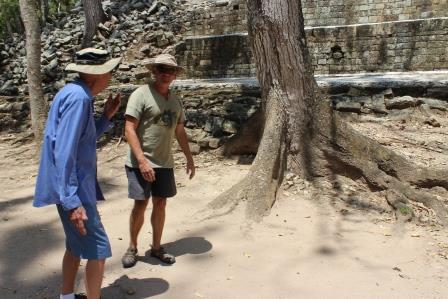
And of course, it wasn't all serious education all day long... here we have Uncle Bob being eaten by an alligator.
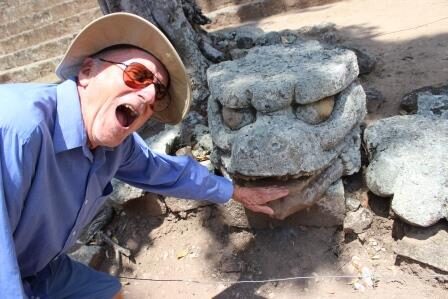
Then we headed back into town for lunch. We found this amazing restaurant that served an interesting mix of food - including some Mediterranean - and they served one of Melissa's favorites - Mousaka. Though their interpretation was a bit different - it had potatoes and crema instead of béchamel sauce - it was very tasty and a nice change from the typical Central American fare.
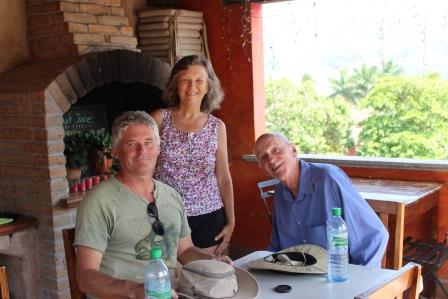
Melissa and Dave then wandered around the town for a while. In the central square there was a training exercise going on for new recruits to the fire department. First they were learning how to quickly unroll and re-roll hoses.
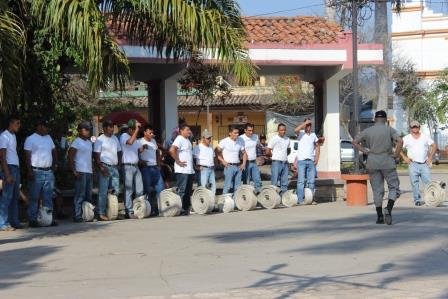
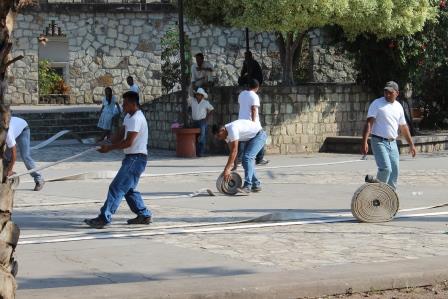
Then they had to run all around the town carrying the hoses over their shoulders.
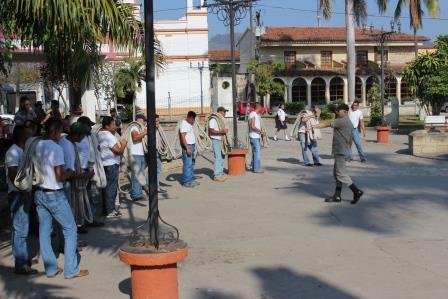
And then finally repeat the whole exercise in bunker gear. Given that it was 90 degrees, we can only imagine how hot they must have been.
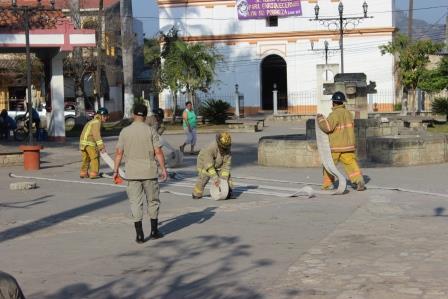
Though it was clear they were having a ton of fun.
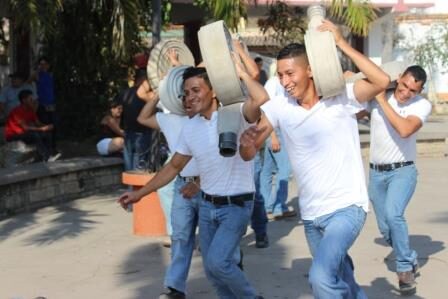
Then we wandered through the market. We were pretty amused to come across what are clearly considered treats down here.
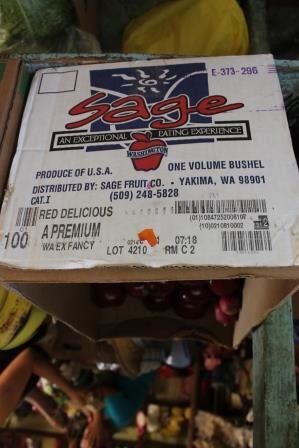
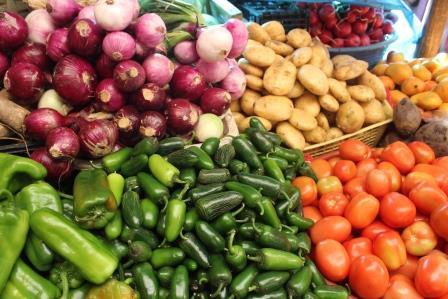
Prices here are not as cheap as we would have expected in Honduras, though no doubt everything was inflated because its a tourist town. Melissa bought a wrap/scarf for $28. Would have been double at Nordstrom's, but probably would have been half in an outlying town.
While out exploring the town, Melissa and Dave caught some news coverage of some violence. Ironically it was coverage of gang violence in Boston.
Dave looks to be a happy camper hanging out in the town square.
